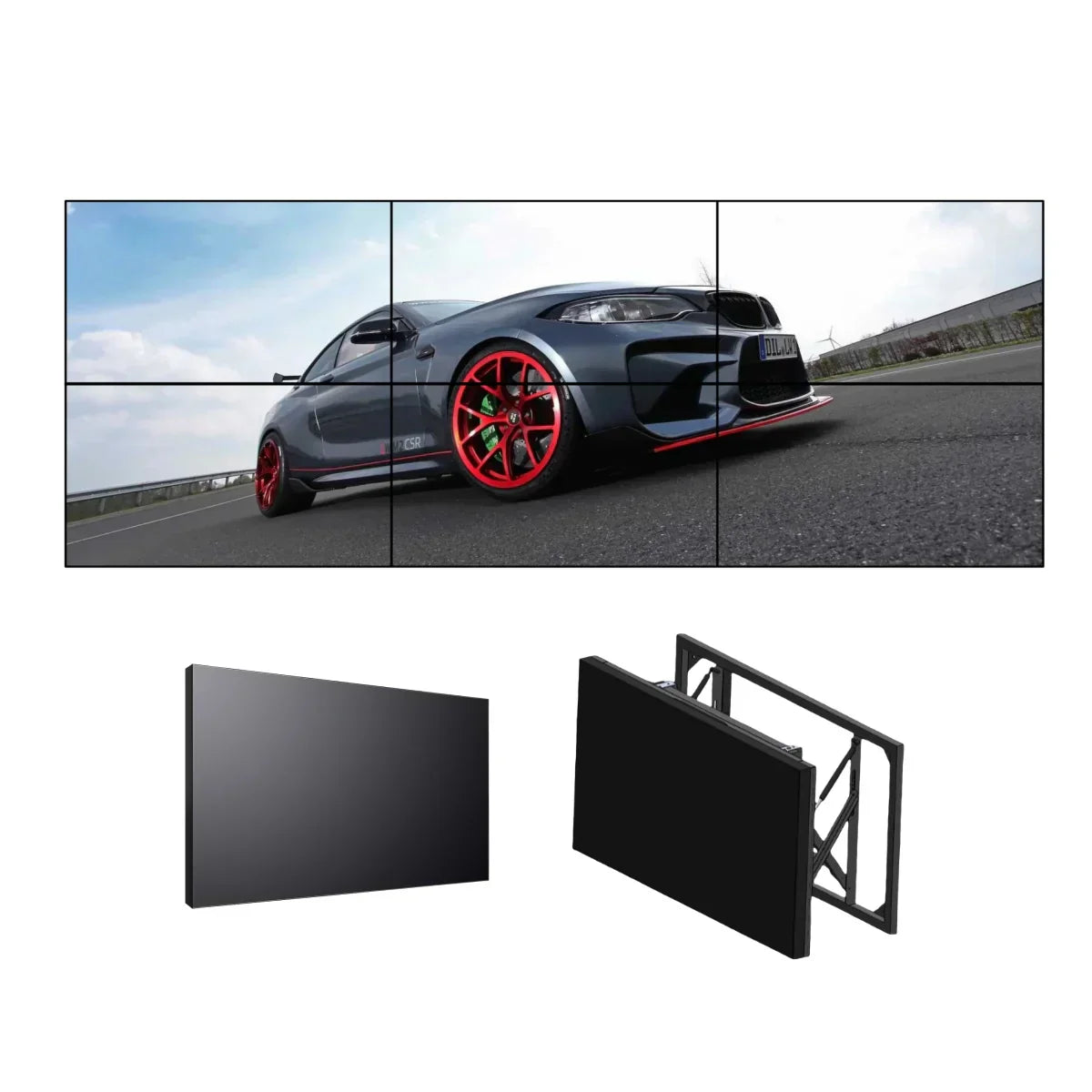Introduction
With the rapid development of display technology, LCD video walls and LED displays have become the two mainstream options for building large-scale video walls. Many customers often struggle with the choice: should they go with LCD or LED? Both technologies have distinct differences in picture quality, application scenarios, and cost. To help you make a better decision, we’ll walk you through their features, pros and cons, and common use cases.
Advantages of LCD Video Walls
LCD (Liquid Crystal Display) video walls are widely used in indoor environments thanks to their high resolution and stable performance. Key advantages include:
-
Cost-effectiveness: Compared with LED displays, LCD video walls are generally more budget-friendly, especially for small- to mid-scale projects.
-
High resolution: Supports 1080p, 4K, and even 8K resolutions, delivering detailed images that are ideal for close viewing and applications requiring precision.
-
Excellent color accuracy: LCD technology provides true-to-life color reproduction, making it perfect for monitoring, design, and video playback.
Drawbacks of LCD Video Walls
-
Bezel gaps: LCD units come with visible bezels between panels, which may affect the seamlessness of the overall image.
-
Limited brightness: LCD screens are less effective in high-brightness environments and are not ideal for outdoor use.
Advantages of LED Displays
LED (Light Emitting Diode) displays are known for their seamless viewing experience and high brightness, making them suitable for a wide range of large-scale applications. Key advantages include:
-
Seamless viewing: Unlike LCD, LED displays can create a completely seamless visual experience across the entire wall.
-
High brightness: Even under strong ambient light, LED screens maintain excellent visibility, making them suitable for outdoor advertising and stage use.
-
Flexible customization: Available in any size or shape, including curved or creative 3D designs.
Drawbacks of LED Displays
-
Higher cost: Both purchase and maintenance costs are higher than LCD, so budget considerations are essential.
-
Pixelation at close range: Depending on pixel pitch, LED displays may show a noticeable graininess when viewed up close, especially with larger pitch models.
Typical Applications & Selection Tips
Best use cases for LCD video walls:
-
Control rooms & monitoring centers: High resolution and accurate color reproduction ensure clear, detailed visuals for long-term surveillance.
-
Conference rooms: LCD provides sharp images and stable signals, supporting multiple device inputs for data, charts, and presentations.
-
Indoor signage: Perfect for malls, exhibitions, and showrooms where clear detail is key for advertising and product promotion.
-
Education & training: Ideal for classrooms, auditoriums, and research centers where clarity and reliable image quality matter.
Best use cases for LED displays:
-
Stage performances: LED walls can be built in large sizes and creative shapes, delivering immersive effects when paired with lighting and sound.
-
Outdoor advertising: With high brightness and weatherproof design, LED displays remain clear even under direct sunlight or harsh weather.
-
Sports arenas: Large-scale LED screens provide seamless coverage, ensuring audiences can see scores and visuals from a distance.
-
Commercial plazas & creative displays: LED’s flexibility allows for curved, 3D, or customized designs that create strong visual impact.
Recommended Solutions
Here are some of our premium display solutions for your reference:
|
Product Type |
Specifications & Features |
Recommended Applications |
Links |
|
LCD Video Wall |
55" panels, 3.5mm narrow bezel, supports 1080p/4K |
Control rooms, conference rooms, exhibitions |
55'' LCD 2x2 / 3x2 / 3x3 |
|
LCD Video Wall |
49" panels, ultra-narrow bezel, excellent color reproduction |
Education, indoor advertising |
49'' LCD 2x2 / 3x2 / 3x3 |
|
LCD Video Wall |
65" panels, 3.5mm narrow bezel, Full HD |
High-end conference rooms, showrooms |
65'' LCD 2x2 / 3x2 / 3x3 |
|
LCD Video Wall |
46" panels, ultra-narrow bezel, flexible configuration |
Control rooms, retail stores |
46'' LCD 2x2 / 3x2 / 3x3 |
Conclusion
When choosing a video wall, the decision mainly depends on viewing distance, budget, and application scenario:
-
If you prioritize resolution and detailed images, and the environment is mainly indoors, LCD video walls are your best choice.
-
If you need a large, seamless, and high-brightness solution for stages or outdoor use, LED displays will be the better option.
No matter which solution you choose, proper planning and professional installation are key to ensuring the best visual performance.

